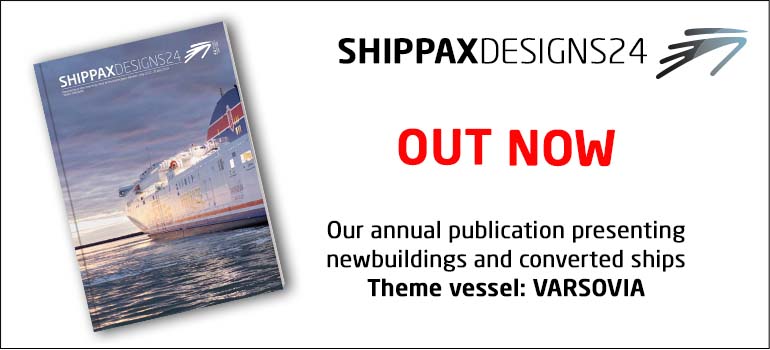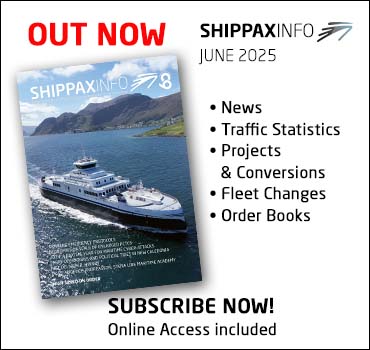
IMO Sub-Committee on Ship Systems and Equipment (SSE 9) Outcome
Interferry's Director of Regulatory Affairs, Johan Roos, participated in the 9th session of the IMO’s Sub-Committee on Ship Systems and Equipment (SSE 9), held in London 27 February to 3 March. SSE 9 was the last round of technical discussions with the draft amendments to be submitted for approval to the upcoming 107th session of IMO’s Maritime Safety Committee (MSC 107) later this spring (31 May-9 June). Once rubberstamped by MSC 107, the amendments to the SOLAS Convention and related codes are expected to enter into force come 1 January 2026.
SSE 9’s highlight relative to the ro-ro passenger ferry sector was the finalized draft of new SOLAS requirements to minimize the incidence and consequences of fires on ro-ro passenger ships. SS9 also finalized the draft of interim guidelines on the safe operation of onshore power supply (OPS) facilities.
In the wake of a few major fire incidents on vehicle decks of ro-ro passenger ferries, IMO has put its shoulder to the wheel to reduce the risk of fire and the spread of it in ro-ro and special category spaces on new and existing ro-ro passenger ships. SSE 9 finalized several draft amendments to SOLAS Chapter II-2 (Construction – fire protection, fire detection and fire extinction), the International Code for Fire Safety Systems (FSS Code) and MSC.1/Circ.1430 (Revised guidelines for the design and approval of fixed water-based fire-fighting systems for ro-ro spaces and special category spaces).
All in all, Interferry is positive about the outcome of the SSE 9 deliberations on ro-ro passenger ferry fire protection for both existing and new ships (existing ships are those built before 1 January 2026). One of the key topics of discussion concerned the requirements for retroactive fire monitors on weather decks. Over the years we have successfully steered the discussions away from technical retroactive requirements, and only accepted that weather decks on existing ro-pax ship should be protected by fire monitors, i.e. water cannons, and detection systems.
While the member states have shown a general willingness to provide flexibility to the actual performance requirements for existing ships, repeated attempts have been made to push the standards-to-be for existing ships to approach the (pending) standards for new ships. What’s on the table now offers reasonable flexibility for existing ships while at the same time ensuring a reasonable protection of weather decks going forward. In short, to protect areas on weather decks intended for the carriage of vehicles, passenger ships built before 1 January 2026 shall be equipped with a fixed water-based fire-extinguishing system based on monitors. As far as practicable, these monitors shall be located in positions which ensure unobstructed protection of vehicles in the area on the weather deck intended for the carriage for vehicles and as make use of existing pipes and pump capacities.
In recent years, there has been a great deal of controversy with regard to side openings on ro-ro passenger ferries. Suffice it to say that side openings will continue to be allowed also in new designs, provided there is appropriate fire protection rating (A-60) of the superstructure above the openings. This is one of the lessons learned from the NORMAN ATLANTIC disaster with certain of our members already having voluntarily implemented the protection of life-saving appliances (LSAs) located above side openings by welding the openings shut.
Side openings, but also the ends or deckheads of ro-ro spaces, shall have to be situated and arranged in such a way that a fire in the ro-ro space shall not endanger stowage areas for survival craft, embarkation and assembly stations as well as accommodation spaces, control stations and normally occupied service spaces in superstructures and deckhouses above the ro-ro space. Exemptions will apply, e.g. when openings are fitted with closing arrangements such as steel ramps and doors, when protected by steel or other fire-resistant closing devices, or as mentioned before, when the fire integrity of the ship’s side, including windows and doors, boasts A60 insulation.
The limitation of safety distance on the weather deck has been yet another hot potato for some time. Safety distance between the ship’s structural elements and the cargo stowed on the weather deck should guarantee access to assembly stations and LSAs in case of a fire event. The higher the safety distance, the more cargo stowage space on the weather deck is lost. So, we were rightfully concerned about the safety distance principle as it risked to significantly limit the cargo/vehicle stowage space on the weather deck, bearing in mind that almost every vertical structure (accommodation, side casings, funnels, storage, etc.) would require a safety distance from the stowed vehicles, despite these vertical structures already being subject to fire rating requirements.
For the side casings, the member states have agreed that unless there are spaces within the side casings which are normally manned, there is no need for a safety distance in relation to the vehicle area, effectively ensuring full transversal utilisation of the weather deck. Still, a horizontally measured safety distance of minimum 6m will apply between the designated vehicle lanes and some of the ship’s structural elements such as accommodation spaces, control stations and normally occupied service spaces in superstructures and deckhouses adjacent to the weather deck. However, there are provisions in place to reduce the safety distance to 3m if complemented with a fixed water-based fire-fighting system.
Last but not least, SSE 9 also finalized the draft of interim guidelines on the safe operation of onshore power supply (OPS) service in port. The draft of the interim guidelines, which will be submitted for approval to MSC 107, intends to prevent accidents caused by operational errors in relation to ships’ connections to shore power.
Johan Roos – Director of Regulatory Affairs, Interferry
Mar 21 2023
Most read
Refurbished passenger areas on Finnlines’ Finland–Germany vessels welcome summer travellers
Jun 19 2025

















